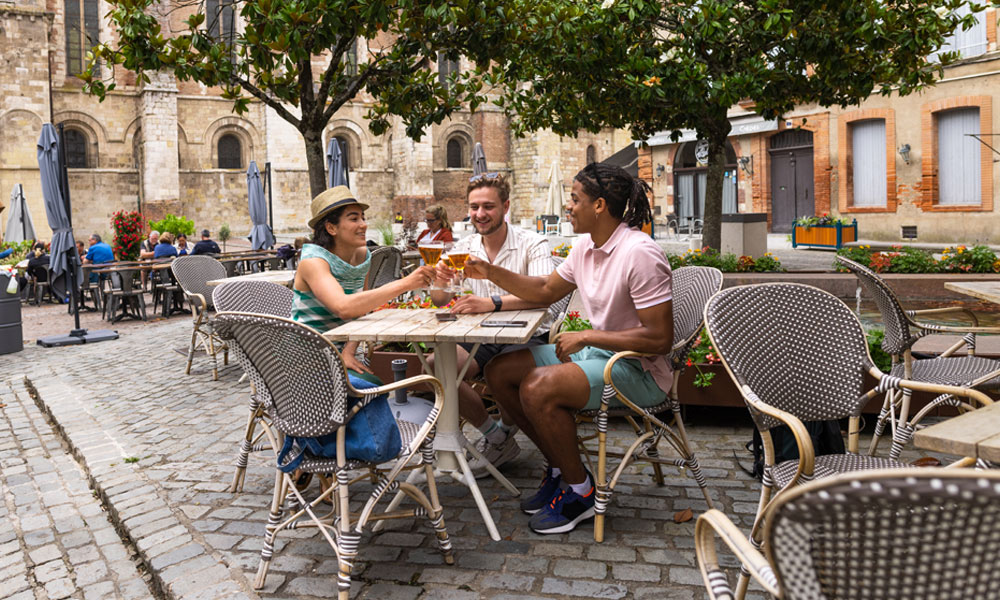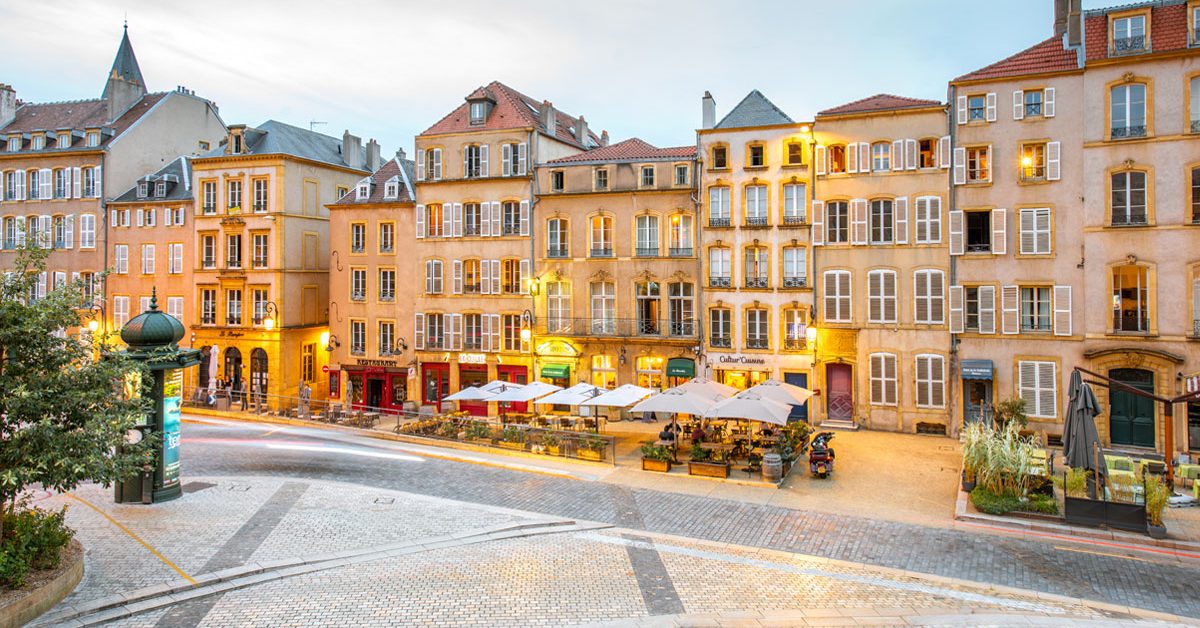France is not a beer country—that’s a fact. France attracts approximately 75 million international travelers every year. They come for the wine and delicious bread and viennoiseries, not for beers as they would be when visiting neighboring countries such as Belgium or Germany. Part of France’s beer history is missing, so much so that historians have difficulty collecting an accurate picture of beer consumption there through the centuries.
“Beer, prehistoric and ancient, remains poorly known despite its wide consumption. As the Gauls did not leave any writings, we have no direct testimony from them about their national drink,” writes archeologist Fanette Laubenheimer in her book Boire en Gaule. “Fortunately, others have taken it upon themselves to inform us, but they give the outside point of view of foreigners in the country, for whom beer is a curious and ‘barbaric’ drink.”
What we know for sure is what is happening today. France has the highest number of breweries in Europe, with more than 2,500 companies registered as such—more than before the World Wars. This represents massive growth over the last decade, since there were only 500 breweries in 2013, around 30 in the 1980s, and about 100 in the 1950s. (Yet, France’s strong wine culture still overshadows this growing interest in craft beer.)
While you can find breweries all over the country, historical beer regions located just above the northern limit—perfect for hop growing—such as French Flanders in the North and Alsace in the East are still going strong (80 percent of French hops are produced in Alsace).
France also exports 1.2 million tons of malt each year, which makes it the biggest malt exporter globally—one in five beers in the world is made with French malt. Perhaps France’s most significant contribution to beer, though, isn’t raw ingredients: Louis Pasteur’s studies on beer in 1873 ushered in pasteurization, and with it, a new era of safety and freshness for brewers around the world. Is France’s beer culture and significance as irrevelant as people assume?
While French people might lack beer education, they still very much enjoy drinking it. According to a recent survey, beer is their favorite alcohol (though it should be noted that in this survey, wine and Champagne are separated into two different categories). With a thriving craft beer scene and in spite of economic difficulties, beer professionals are hopeful for its future.
Not Our Terroir
Despite being the fifth-largest beer producers in Europe with 2 billion liters produced in 2022 (the first one being Germany with 7.6 billion liters), French people are far behind when it comes to drinking it. They’re almost last on the list of per-capita beer consumption in Europe, with only 33 liters a year per inhabitant. Only the Greeks drink less beer per person.
Tommy Pace, co-founder of Brasserie VIF in Burgundy and a native of Bethel, Connecticut, says he’s still amused by how infrequently French people drink beer compared to his American counterparts.
“They drink half pints, what is that?” he says with a laugh. “In the States, if you do a barbecue or a picnic, you bring a six-pack! In France you have a Pastis or a rosé-piscine.” (The latter is the very French summer delight of enjoying rosé wine by a swimming pool.)
Pace shares how difficult it was for him to find good beer when he moved to France, not in terms of quality, but accessibility: “When I visited my dad in Connecticut, I found Cantillon more easily than in Burgundy.”
That’s a paradox, he says, when you consider France’s attachment to good food and good alcohol—the French art de vivre. Beer still doesn’t seem to qualify as such.
Charlotte Joly, a beer sommelier in Paris, says that the interest for beer is increasing for people outside of connoisseur circles. “French people are really proud of French craftsmanship and skills. That’s what they’re searching for in craft beer: the terroir, the authenticity,” she says.
Still, while almost any French person can list the different wine cépages, they’ll reference beers by their color (blonde, brune, noire, rouge) rather than their style, something that is still hard for Pace to comprehend. “I have customers that ask me for a blonde beer, but if you look at the 10 beers I brew, seven would qualify as blonde while all being very different,” he says.
A style as simple as a pale ale won’t speak to most French drinkers. “There’s a general rejection when it comes to using English words,” Joly says. “With craft beer, you can be seen as an elitist snob.”
Even local beer styles such as saison or grisette—whose traditions span both France and Belgium—are unknown to most. “France has forgotten its beer history,” Pace says. “Before the World Wars, there were 13 breweries in Beaune and now people are asking me why I brew beer in a wine region.” (The famed wine region of Burgundy was even an important region for growing hops in the 1920s with its own variety, Tardif de Bourgogne.)
For beer professionals, this also brings challenges. With the growing financial interest surrounding craft beer, specialized distributors, bars, and shops are opening all around the country without some basic knowledge about the product. This is often the case despite educational efforts from beer organizations (such as Brasseurs de France and Syndicat National des Brasseries Indépendantes) for both professionals and consumers.
“There’s lots of problems with beer distributors who don’t have cold storage or bar owners who don’t know how to stock and serve beer properly but specialize in craft beer anyway,” Pace laments.
The Craft Conundrum
In France, craft beer means many things to different people. Legally, a craft brewery doesn’t exist. But a “petite brasserie indépendante” (small independent brewery) does. To be considered as such, a small independent brewery must be “legally and financially independent” and not produce more than 200,000 hectoliters (around 167,000 barrels) a year.

That’s a lot, considering that 75 percent of French breweries produce fewer than 3,000 hectoliters a year (1,900 barrels) and that only 10 breweries in France brew more than the 200,000-hectoliter limit.
So, if you’re over the limit, you’re considered an industrial brewery. It’s a term that doesn’t speak to Magali Filhue, managing director of the brewer’s union Brasseurs de France.
“Opposing craft and industrial breweries doesn’t make sense to me,” she says. “Some will say that a pasteurized beer is an industrial one but I can think of a really small brewery that pasteurizes its beers. There’s just different markets and different consumers.”
Joly also struggles to define what makes a craft brewery. “I’d say that the quality of the raw materials takes a huge part in my definition, as well as originality and the desire to brew more complex recipes.” However, she admits this can also apply to some big breweries working with locally sourced ingredients and having their own research and development department tasked with creating new recipes.
If you ask beer superfans, you’ll see that how craft beer is defined is important, and that there’s a clear difference between the French expression “brasserie artisanale,” or the Franglish “brasserie craft.”
A “brasserie artisanale” is a brewery having small, local production and mostly making traditional beer styles with Belgian inspiration, such as a trippel.
On the other hand, a “brasserie craft” has more of a national aura and takes its inspiration from American beer styles with hoppy recipes and new styles such as pastry sour and pastry stout—anything hazy, sweet, and decadent. The label might read “Double IPA DDH Citra Cryo,” which will make little to no sense to most beer consumers in France. (The beers are also mostly packaged in cans, which are still rejected by many French drinkers who associate canned beers with tasteless industrial beers.)
While the brasserie artisanale appeals to the general public, bringing them into craft beer with styles they’re familiar with, the brasserie craft is tailored for “ beer geeks” and follows global beer trends—in 2022, craft beer represented 10 percent of the beer sold in France. Different beers for different consumers.
Back To Basics
The French craft beer scene was built on this opposition, with a desire to distance itself from traditional beer recipes that mostly came from Belgium—even if Belgian beers have a very good reputation to most French consumers.
On a trip to New York last October, Joly says she was surprised to find a fridge full of Cherry Chouffe in a craft beer bar. “Chouffe is seen as the opposite of a good beer for French beer geeks, because of its industrial production, the amount of sugar, and the artificial aroma,” she says. (That description could also apply to the pastry stout and pastry sour the same beer geeks love so much.)
Even if the buzz around anything hazy and pastry is still very much happening in beer circles, it seems that brewers are starting to return to what they were running from: tradition.
As in the U.S., with more and more breweries every year comes more competition. As such, only marketing your beer to appeal to beer superfans isn’t a smart business move in the long run. This demographic is very small in France—7 percent of beer consumers see themselves as connoisseurs—and it’s a subgroup that gets bored easily and follows trends rather than being loyal to a particular beer or brewery.
Some craft breweries are now launching core ranges to appeal to a wider public, with familiar and traditional styles. Others are appealing to wine lovers, incorporating French wine heritage into their beers with wild ales, grape ales, or spontaneously fermented beers.
Pace says that this diversity is the strongest quality of the French beer scene, with brewers unafraid of experimenting and trying new things. “We’re lucky to have easy access to excellent raw materials like barley or orchards with old fruit varieties,” he says.
With wine sales declining every year—in supermarkets, beer sales now exceed wine—Filhue thinks that the beer industry must seize the chance to showcase its expertise and quality to consumers.
France is not a beer country. But it has the potential to be and French beermakers are working to make it happen everyday. They just have to convince French people that it’s worth it.
CraftBeer.com is fully dedicated to small and independent U.S. breweries. We are published by the Brewers Association, the not-for-profit trade group dedicated to promoting and protecting America’s small and independent craft brewers. Stories and opinions shared on CraftBeer.com do not imply endorsement by or positions taken by the Brewers Association or its members.


Share Post